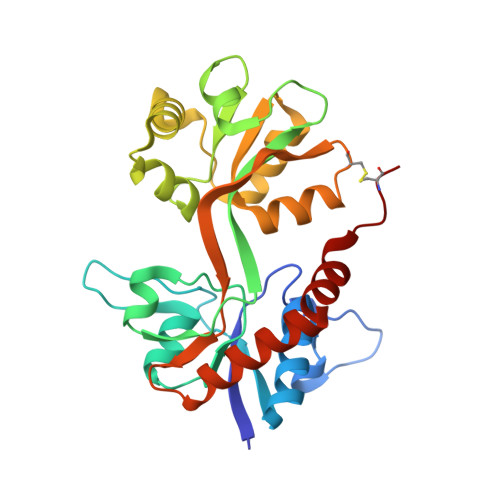Selective kainate receptor (GluK1) ligands structurally based upon 1H-cyclopentapyrimidin-2,4(1H,3H)-dione: synthesis, molecular modeling, and pharmacological and biostructural characterization.
Venskutonyte, R., Butini, S., Coccone, S.S., Gemma, S., Brindisi, M., Kumar, V., Guarino, E., Maramai, S., Valenti, S., Amir, A., Valades, E.A., Frydenvang, K., Kastrup, J.S., Novellino, E., Campiani, G., Pickering, D.S.(2011) J Med Chem 54: 4793-4805
- PubMed: 21619066
- DOI: https://doi.org/10.1021/jm2004078
- Primary Citation of Related Structures:
3S2V - PubMed Abstract:
The physiological function of kainate receptors (GluK1-GluK5) in the central nervous system is not fully understood yet. With the aim of developing potent and selective GluK1 ligands, we have synthesized a series of new thiophene-based GluK1 agonists (6a-c) and antagonists (7a-d). Pharmacological evaluation revealed that they are selective for the GluK1 subunit, with 7b being the most subtype-selective ligand reported to date (GluK1 vs GluK3). The antagonist 7a was cocrystallized with the GluK1 ligand binding domain, and an X-ray crystallographic analysis revealed the largest flexibility in GluK1 ligand binding domain opening upon binding of a ligand seen to date. The results provide new insights into the molecular mechanism of GluK1 receptor ligand binding and pave the way to the development of new tool compounds for studying kainate receptor function.
- Department of Pharmacology and Pharmacotherapy, Faculty of Pharmaceutical Sciences, University of Copenhagen, Copenhagen, Denmark.
Organizational Affiliation:




















